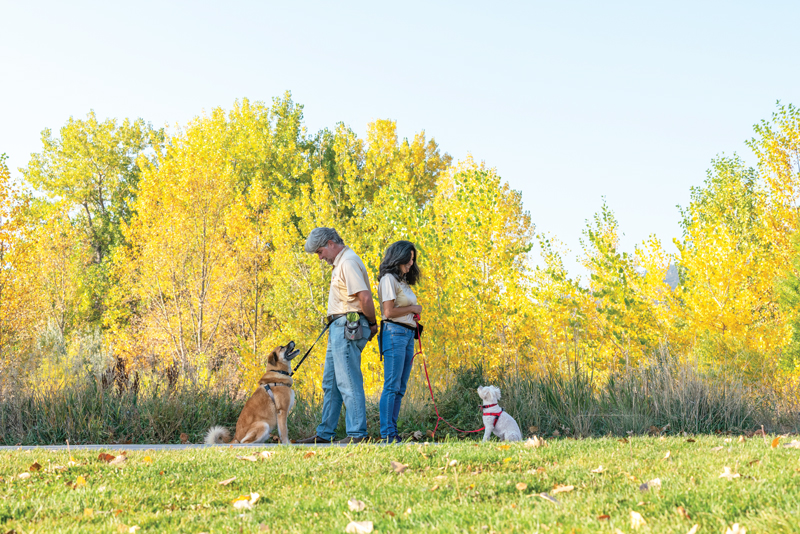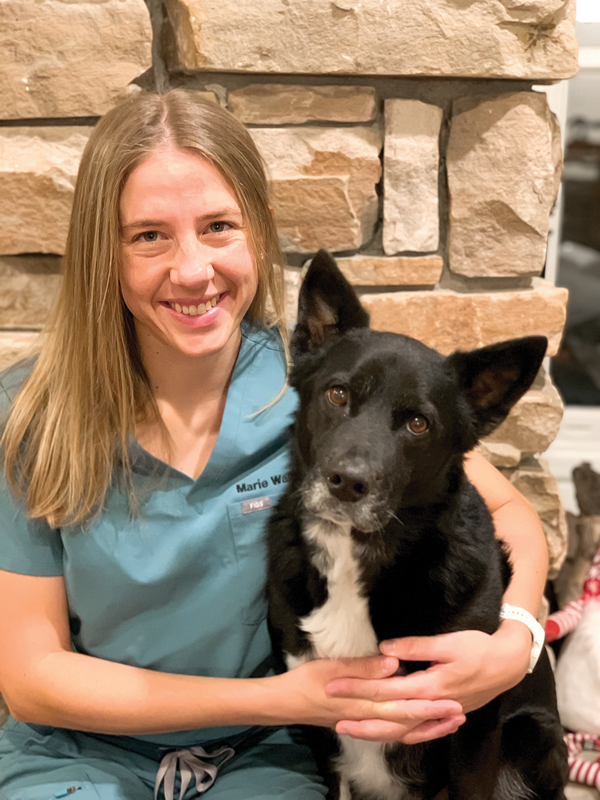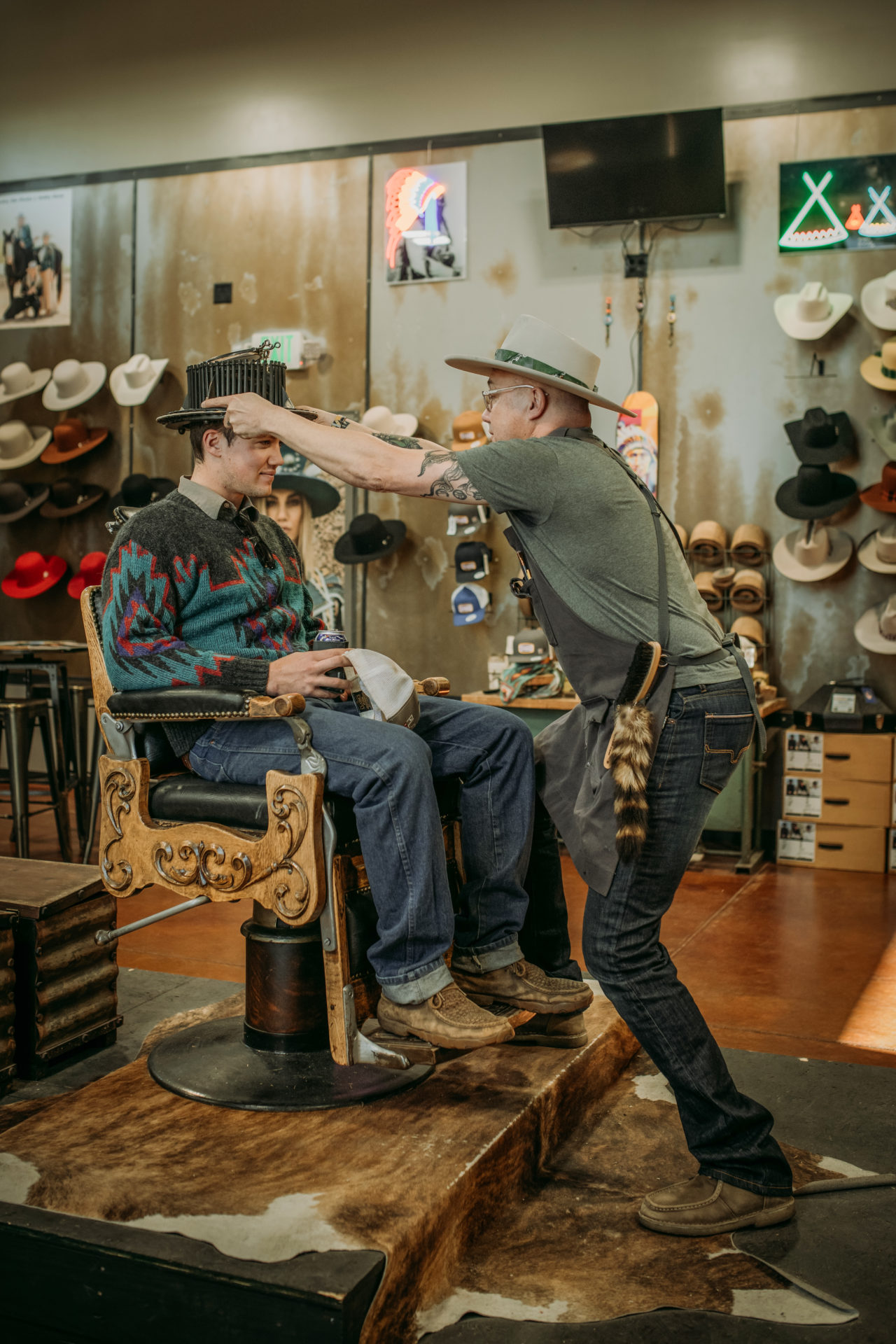Your pets are talking to you every day. Are you listening? From wagging tails to mysterious meows, here’s how to decode what they’re really saying.
“Mom, I don’t feel well.”
When our pets are sick or in pain, they often try to tell us—sometimes subtly, and other times with a clear cry for help. Dogs, for instance, usually mimic humans when they’re under the weather, says Dr. Marie Walker, associate veterinarian at Coyote Ridge Veterinary Clinic in Fort Collins.
“Because dogs evolved alongside humans, they tend to do similar things that we would do,” she says. “They sleep more, eat less and might be vocal with their pain. But pain is actually one of the things we miss most often.”
For example, if a dog is limping but doesn’t exhibit any other signs of pain or distress, their pain might go unnoticed. Even when they are displaying minor symptoms, Walker urges the owner to empathize with their pet.
“I have a lot of knee problems, and I might be sitting here with my knee in pain, but I’m not necessarily going to be whining, even though it might be hurting me. Dogs can be similarly stoic, but if they’re not bearing weight on a limb, that is a sign of pain,” she says.
Cats, on the other hand, are masters of disguise and typically conceal weaknesses such as sickness or injury to protect themselves from bigger predators. Their evolutionary instinct to mask weakness prevents many owners from realizing that something is wrong, Walker says.
“Major red flags for cats are hiding, refusing food and a sudden change in weight or litter box habits,” she says. “Unlike dogs and humans, who feel stress in their stomachs, cats experience stress through their bladder. Inappropriate urination isn’t an act of spite; it’s often a cry for help, signaling illness, fear or distress.”

Canine Companion Consulting owners Wayne Bolen and Beth Friedman. Photo by Silver Paw Studio.
Understanding body language
Learning to read your pet’s body language can feel like deciphering a secret message, but doing so can deepen the bond you have with them and clue you in to how they’re feeling. Wayne Bolen and Beth Friedman, owners of Canine Companion Consulting in Fort Collins, liken learning a pet’s body language to the process of learning to read and then “being given the greatest books ever written.”
The couple encourages dog owners to pay close attention to their ears, mouth and head, especially if they’re showing signs of discomfort and anxiety. For example, ears pinned back, a closed mouth and a tense, lowered head are all clear signs of unease.
“To really understand your dog, you’ve got to pay attention to everything,” Bolen says. “It’s like reading a book: You have to read the whole thing to get the full story.”
Cats also communicate using body language, but their signals can differ drastically from a dog’s, says Amelia Wieber, a cat behavior consultant who owns Caring Behavior in Frederick and teaches the Applied Companion Animal Behavior course at Front Range Community College in Fort Collins. While dogs typically wag their tails when they’re happy or excited, when cats continuously flick or wave their tails, it’s usually a sign that they’re agitated or annoyed, she says.

Marie Walker, associate veterinarian at Coyote Ridge Veterinary Clinic.
What they’re trying to say
Dog talk (barks, whines and growls):
Barking is a dog’s go-to communication method, but not all barks mean the same thing. According to Bolen and Friedman, other factors such as pitch and accompanying body language are what differentiate a dog’s vocalizations. For instance, a high-pitched bark with a wagging tail usually means your dog is excited or happy, and a low-pitched bark with a tense, crouched stance can mean your dog is feeling afraid or aggressive.
Dogs also whine to express a range of emotions, from wanting your attention to signaling anxiety or pain. When a dog growls, don’t ignore it: They’re telling you they’re uncomfortable and need space, the couple says.
Cat talk (meows, hisses and purrs):
Unlike dogs, cats aren’t vocal with each other. Research has shown that meowing is a language reserved just for us, Wieber says. So, when your cat greets you with a bright, happy trill after you’ve been away, it’s not just a sound; it’s their way of saying hello.
Purring is another classic sign of contentment, Wieber says, but sometimes cats purr even when they’re in pain as a self-soothing mechanism. Hissing, growling or spitting, on the other hand, is their way of saying “Back off.” If your cat yowls persistently, Wieber says they may be feeling lost, distressed or unwell.
Pets may not use words, but they’ve developed a rich language all their own. With a little observation, you can better understand what they’re trying to say, whether it’s a request for a belly rub, a signal they’re feeling unwell or simply
“I love you.”
How Pets Talk to Each Other
Ever wonder how pets interact with their own kind? Understand their social signals with this cheat sheet.
DOGS
Sources: Wayne Bolen and Beth Friedman, owners of Canine Companion Consulting
Sniffing each other’s…you know. Because dogs’ anal sacs produce chemicals that release unique markers, sniffing that area can help dogs determine whether they have met before and, if not, establish a relationship with one another. Given their sharp memory for scents, this greeting can help them recognize each other for years to come.
Play bows. A universal invitation to play, dogs stretch their front legs and bow low to signal they’re ready for fun. Tail wagging and excited barks often accompany this gesture.
Showing the tummy. Rolling over to expose the belly is a clear sign of submission. During play, it’s like saying “You win”—an expression of trust and surrender.
CATS
Source: Amelia Wieber, cat behavior consultant and owner of Caring Behavior
Slow blinking. A slow blink is a feline way of expressing trust and friendliness, almost like blowing a kiss. In contrast, a cat that maintains unblinking, intense eye contact is on alert and may not welcome interaction.
Touching noses and cheek rubs.
When cats touch noses, it’s akin to a polite handshake. If they’re close, they might rub their cheeks or foreheads against each other, sharing scents in a warm, affectionate “hug.”
Grooming. Beyond hygiene, grooming between cats strengthens social bonds, communicates trust and reinforces group dynamics. It can also help them create a shared smell, a sign of belonging.







